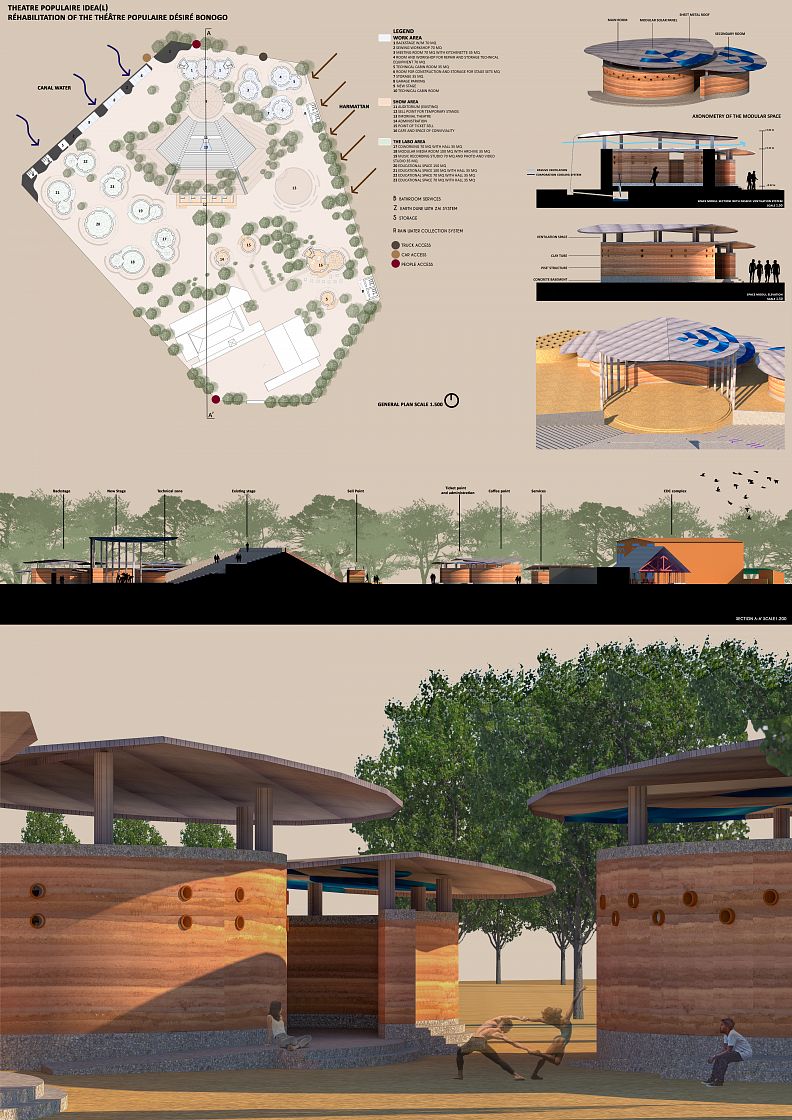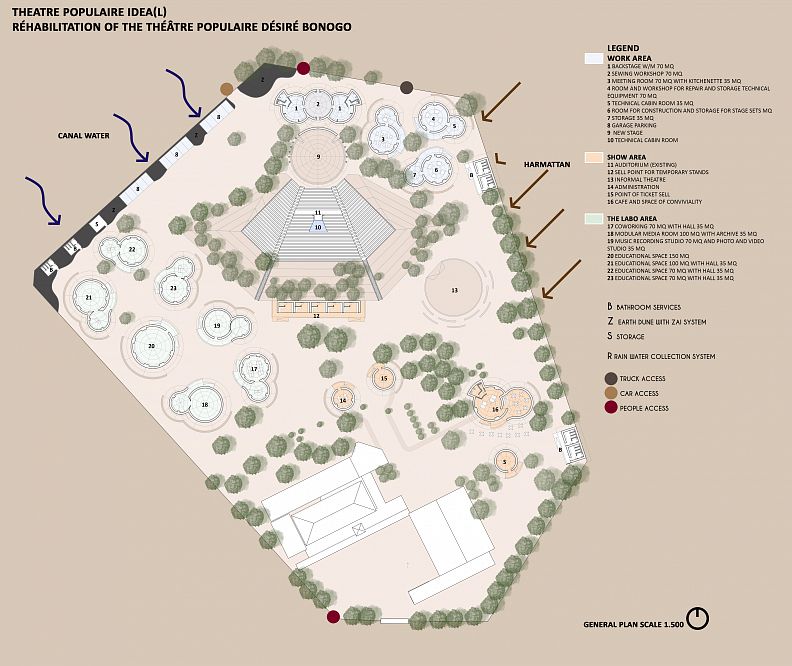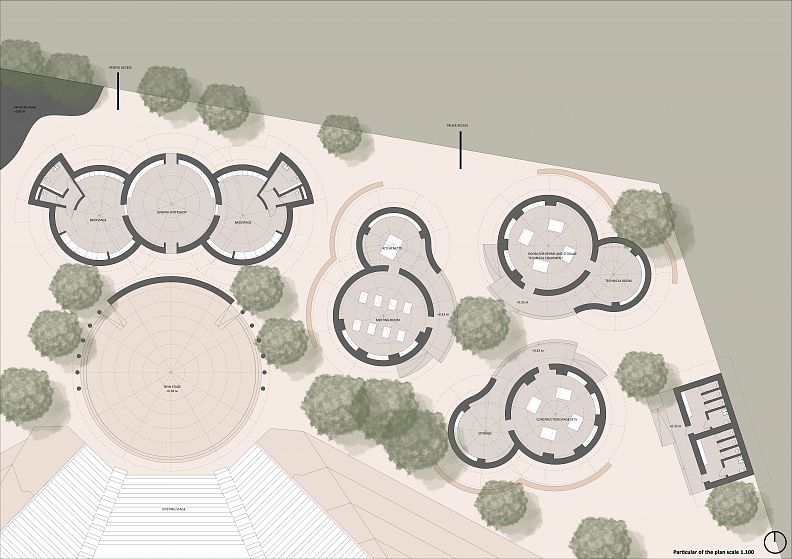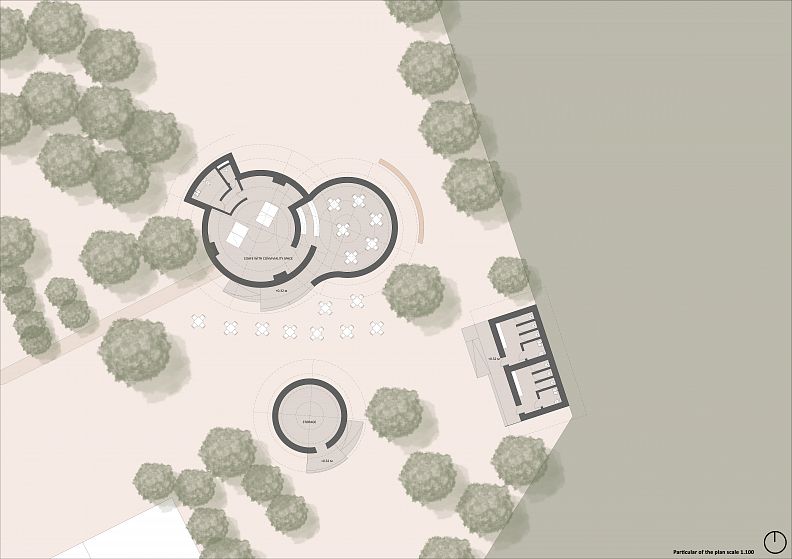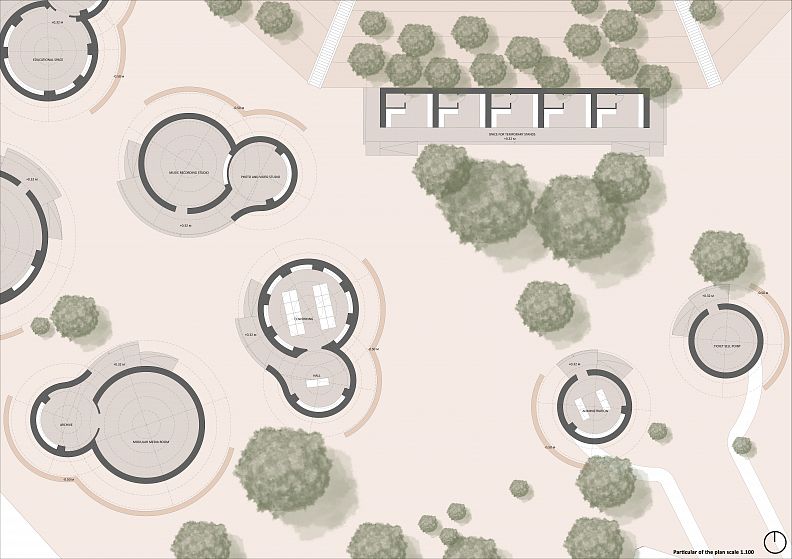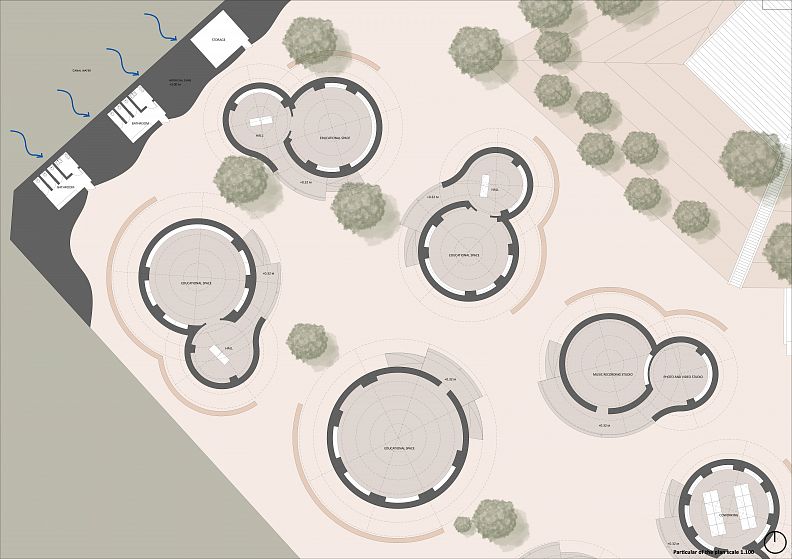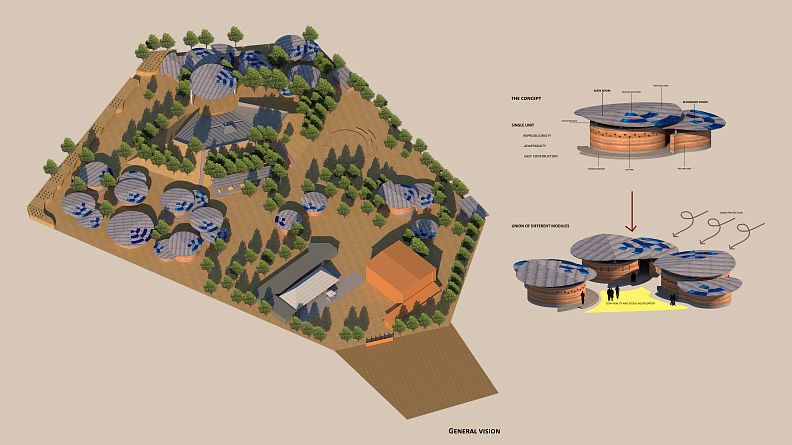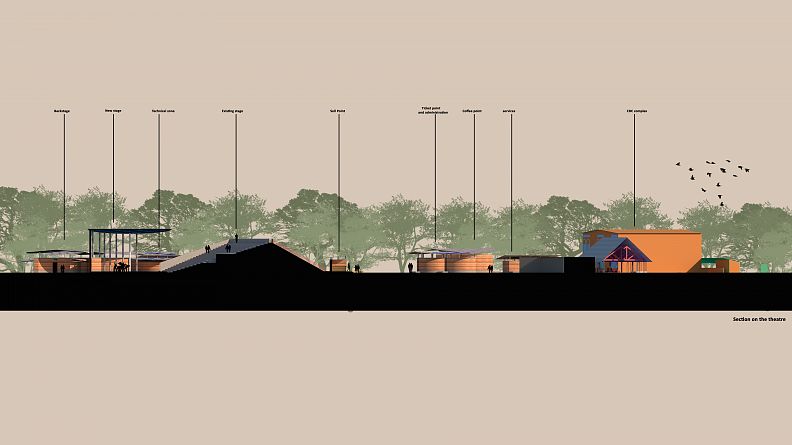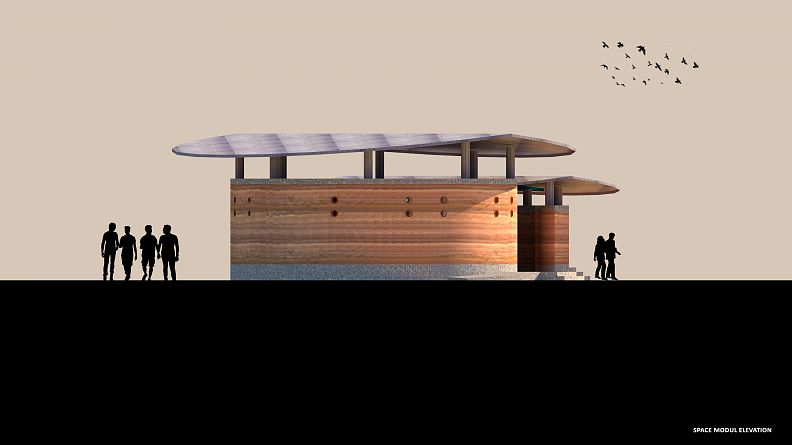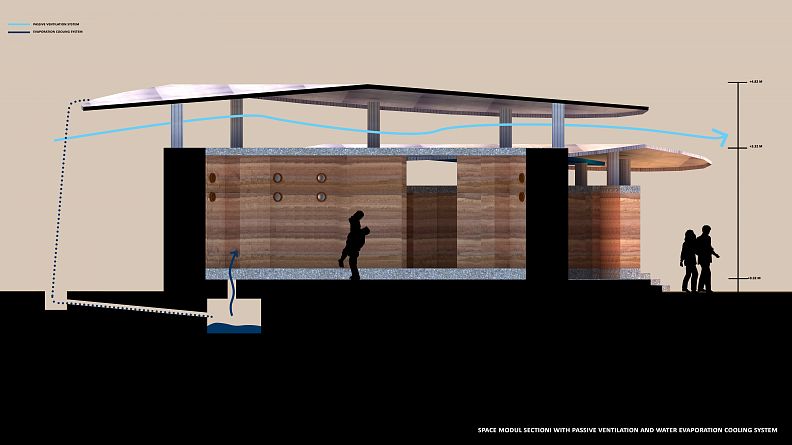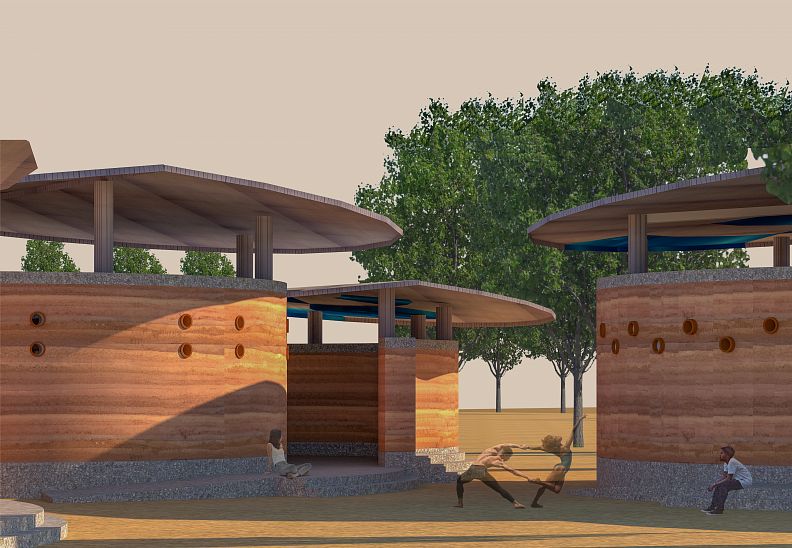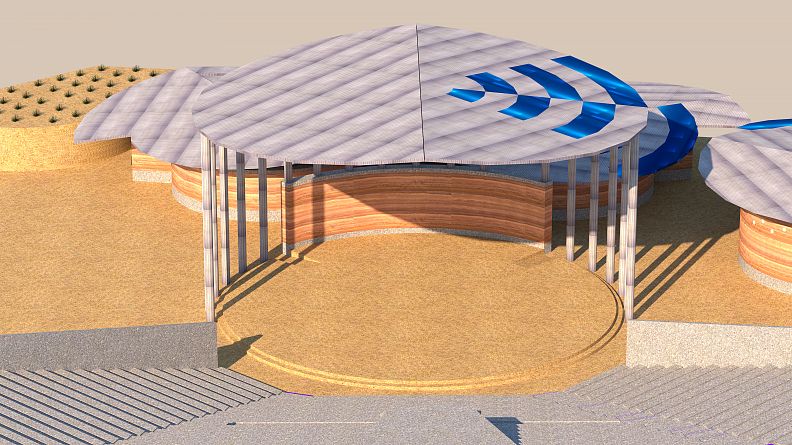THEATRE POPULAIRE IDEA(L) RÉHABILITATION OF THE THÉÂTRE POPULAIRE DÉSIRÉ BONOGO

Project idea
The project was born from the climatic and environmental analysis of the place and from the study of the traditions of Burkina Faso. The idea starts from the reworking of the vernacular house of the Mossi tradition (the ethnic group most present in Ouagadougou), that is, a hut with a conical roof and cylindrical body. By formally reworking this model, I came to a module consisting of a circular supporting structure in raw earth, which rests on a concrete base (so as to avoid soil moisture) and is crowned by a light sheet metal roof.
Project description
The spatial arrangement of the modules in the lot derives from an environmental analysis: the fundamental criteria were those determined by ventilation, the presence of the Harmattan and the presence of the canal. Each of these modules has been aggregated to the others trying to create an internal courtyard where they can gather and where they can be protected from Harmattan during the dry season and which becomes above all a place of aggregation and sharing. The idea takes up the typical rural villages of the area that develop around a central courtyard. In order to cope with the waters of the canal during the abundant rainy season, an artificial dune was created (using the remains of the demolitions to create the structure): the dune becomes an opportunity to house the toilets, warehouses and covered parking lots. Above it a Zai cultivation system was created, which collects rainwater. For this reason, moreover, a channel is created around each module that collects rainwater from the roof and stores it below the module, ensuring ventilation by evaporation. This adds to the ventilation guaranteed by the detachment of the cover from the body of the structure, so as to guarantee a ventilated and comfortable environment. Furthermore, to further increase both the ventilation and the light, they were drowned inside the structure of the terracotta pipes. In general, zones have been created that respond to requests (Work, Labo, Show zones) which are connected and permeable but which at the same time are independent. At the center of this system we see the existing theater where a reorganization of the steps and entrances is foreseen, this acts as a generator for all the environments that are distributed around it. Everything is designed to create more or less large open spaces where you can get together and where to socialize, so to live both inside and outside. Last but not least, an “informal theater” has been designed to try out, for minor shows or for performances during festivals.
Technical information
The choice of materials derives from the study of the construction techniques of the place and above all from the availability and cost of the building materials. The supporting structure is made with the Pisè technique, which consists in compacting raw earth inside formwork. The module itself is made of modular parts, such as the roof and the structure itself. The roof is made of sheet metal modules, some of which can be replaced by integrated solar panels, so as to guarantee energy independence. The supporting structure is made with the idea of using a curved but repeatable formwork for all environments. In this way the construction is facilitated and can be repeated to meet any space requirement, since there are three types of modules (70 m2 + 35 m2, 100 m2 + 35 m2, 150 m2 + 35 m2) each consisting of a secondary environment where the actual activity takes place and from a secondary environment where a secondary activity annexed to the first takes place.
